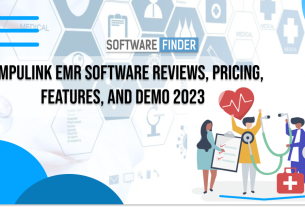Medical insurance claims are an essential part of the healthcare industry, ensuring that patients receive the necessary coverage for their medical expenses. Insurance claims play a significant role in the financial stability of healthcare providers and the satisfaction of patients.
The process involves submitting and processing claims to the insurance company for reimbursement. However, managing medical insurance claims can be a complex and challenging task, requiring efficient systems and processes. This article will explore the problems associated with managing medical insurance claims and how insurance claim analytics can improve efficiency in this critical area of healthcare.
Page Contents
The Importance of Insurance Claim Analytics
Insurance claim analytics refers to the practice of analyzing data related to medical insurance claims to gain insights and improve processes. It involves using statistical techniques and advanced technologies to extract meaningful information from vast amounts of data. In the context of medical insurance claims, analytics can provide valuable insights into patterns, trends, and potential issues. By leveraging this information, healthcare providers and insurance companies can enhance their decision-making processes, streamline operations, and optimize resources.
Understanding the Insurance Claim Process
Before delving into the challenges of managing medical insurance claims, it is crucial to understand the insurance claim process. When a patient seeks medical treatment, the healthcare provider generates a claim for the services rendered. This claim contains detailed information about the patient, the services provided, and the associated costs. The claim is then submitted to the insurance company for reimbursement. The insurance company reviews the claim, verifies the information provided, and determines the amount to be reimbursed based on the patient’s coverage. Finally, the insurance company processes the reimbursement and transfers the funds to the healthcare provider.
Common Challenges in Medical Insurance Claims
Managing medical insurance claims presents several challenges that can impede efficiency and accuracy. One common challenge is the complexity of insurance policies and regulations. Insurance policies can vary significantly, and staying up-to-date with the ever-changing regulations can be overwhelming. This complexity often leads to errors and delays in claims processing. Additionally, the sheer volume of claims can overwhelm manual processes, leading to inefficiencies and backlogs. The lack of standardized formats for claim submission and the absence of interoperability between different systems further compound the challenges.
Another significant challenge is the prevalence of fraudulent claims. Insurance fraud is a significant problem, costing the industry billions of dollars each year. Detecting fraudulent claims requires sophisticated analytics tools and techniques to spot patterns and anomalies in the data. Moreover, the manual review process for claims is time-consuming and prone to errors, making it difficult to detect fraudulent activity promptly.
How Insurance Claim Analytics Can Improve Efficiency
Insurance claim analytics offers a solution to the challenges faced in managing medical insurance claims. By leveraging advanced technologies and statistical techniques, analytics can provide valuable insights that enhance efficiency and accuracy.
One of the primary benefits of insurance claim analytics is the ability to automate processes. By automating the review and verification of claims, healthcare providers can significantly reduce the time and effort required for manual processing. This automation also reduces the risk of errors and allows for faster reimbursement.
Analytics can also help identify and prevent fraudulent claims. By analyzing patterns and anomalies in the data, sophisticated algorithms can flag potentially fraudulent claims for further investigation. This proactive approach not only saves money but also protects the integrity of the insurance system.
Furthermore, insurance claim analytics software can provide real-time monitoring of claims, enabling healthcare providers to identify bottlenecks and resolve issues promptly. This proactive approach improves overall efficiency and enhances the patient experience.
Key Metrics and Data Points in Insurance Claim Analytics
To fully leverage the power of insurance claim analytics, it is essential to focus on key metrics and data points. These metrics provide valuable insights into the performance of the claims process and help identify areas for improvement. Some key metrics include claim acceptance rate, claims processing time, denial rate, and reimbursement accuracy. By tracking these metrics over time, healthcare providers can identify trends and implement targeted interventions to enhance efficiency.
Data points such as patient demographics, diagnosis codes, procedure codes, and billing information also play a crucial role in insurance claim analytics. Analyzing these data points can reveal patterns in patient behavior, identify common billing errors, and detect potential fraud. The integration of structured and unstructured data sources further enriches the analytics process, providing a comprehensive view of the claims landscape.
Tools and Technologies for Insurance Claim Analytics
The field of insurance claim analytics has witnessed significant advancements in recent years, thanks to the development of sophisticated tools and technologies. These tools enable healthcare providers and insurance companies to leverage data for better decision-making. One such technology is predictive modeling, which uses historical data and statistical algorithms to predict claim outcomes and identify potential issues. Predictive modeling can enable proactive interventions, reducing claim denials and improving reimbursement accuracy.
Natural language processing (NLP) is another powerful tool in insurance claim analytics. NLP allows systems to understand and interpret unstructured text data such as medical records and claim notes. By analyzing this unstructured data, NLP can identify patterns and extract relevant information, further enhancing the analytics process.
Best Practices for Implementing Insurance Claim Analytics
Implementing insurance claim analytics requires careful planning and execution. To ensure success, healthcare providers should follow best practices that promote efficiency and accuracy. One crucial best practice is to establish clear goals and objectives for the analytics initiative. By defining specific metrics and outcomes, healthcare providers can align their efforts and measure the impact of analytics on the claims process.
Another best practice is to invest in robust data management systems. Data quality and integrity are essential for accurate analytics. Healthcare providers should establish processes to ensure data accuracy, completeness, and security. This includes implementing data governance policies, conducting regular audits, and investing in data integration and validation tools.
Furthermore, organizations should foster a culture of analytics by providing training and education to their staff. Building analytical capabilities within the organization empowers employees to leverage data and make informed decisions. Finally, healthcare providers should continuously monitor and evaluate the performance of the analytics initiative. Regular reviews and feedback loops enable organizations to identify areas for improvement and optimize their analytics processes.
Future Trends in Insurance Claim Analytics
As technology continues to advance, the field of insurance claim analytics is poised for further growth and innovation. One emerging trend is the use of artificial intelligence (AI) and machine learning (ML) algorithms to automate the claims review process. AI-powered systems can learn from historical data and make accurate predictions about claim outcomes, further reducing the need for manual intervention.
Another future trend is the integration of real-time data sources into the analytics process. With the advent of the Internet of Things (IoT) and wearable devices, healthcare providers can access real-time patient data, enabling more accurate and timely claims processing. This integration also opens up opportunities for proactive interventions, such as alerting healthcare providers to potential risks or complications before they occur.
Conclusion
Managing medical insurance claims is a complex and challenging task, but insurance claim analytics offers a solution. By leveraging advanced technologies and statistical techniques, healthcare providers and insurance companies can improve efficiency, reduce errors, and detect fraudulent activity.
Key metrics and data points provide valuable insights into the claims process, while tools and technologies enable better decision-making. By following best practices and continuously monitoring performance, organizations can optimize their insurance claim analytics processes.
With future trends such as AI and real-time data integration, the future of insurance claim analytics looks promising. By embracing these advancements, the healthcare industry can ensure that patients receive the coverage they need while maintaining financial stability and integrity in the claims process.



